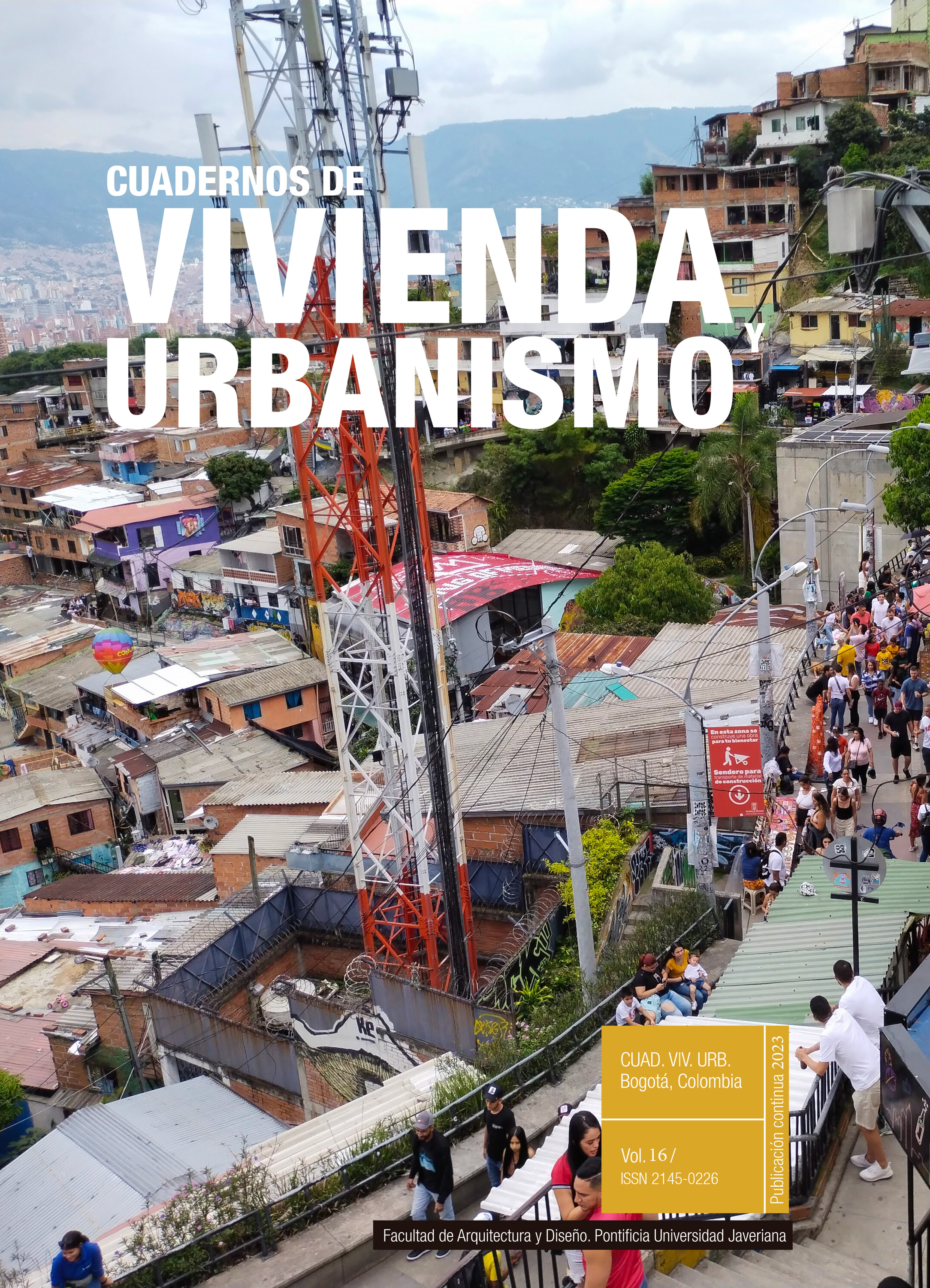Abstract
This article presents a reflection on the development of participatory design exercises for the resilient intervention of public space, from the contribution of children as main actors in the process and with a "bottom-up" approach for the reduction of vulnerability to floods. The text analyzes the contributions in the field of urban design of the creative bets developed by children, based on dialogue and collaborative work around the concept of resilience, presenting as main results urban interventions that allow achieving three objectives: i) technical, by fulfilling a mitigation function; ii) educational, by serving as an interactive scenario for learning environmental concepts; and iii) recreational, by consolidating as public spaces for the enjoyment of the community. Thus, a direct relationship is established for the appropriation of urban design projects when the planning and construction process is developed in an inclusive manner.
Arteaga, R. A. (2018). Espacio público. Una aproximación conceptual. Universidad Nacional de Colombia.
Conde Álvarez, C. (2007). Cambio climático en América Latina y el Caribe: impactos, vulnerabilidad y adaptación. Ambiente y Desarrollo, 23, 23-30.
Deterding, S., Khaled, R., Nacke, L., & Dixon, D. (2011). Gamification: Toward a definition [Conferencia]. Proceedings of CHI 2011 Workshop Gamification: Using Game Design Elements in Non-Game Contexts, 6-9.
Ecología. (2011). Blog de Ecología. http://loftimnaye.blogspot.com.co/2011/06/fenomenos-naturales.html
EIRD. (2006). Estrategia Internacional para la Reducción del Riesgo y Desastres. http://www.eird.org/index-esp2.html
Freire, J. (2009, noviembre 23). Interview Espacios Públicos. https://juanfreire.com/entrevista-sobre-espacios-pblicos/
Garcés, L. M. C., Monsalve, P. I. H., Chavarriaga C. P., & Moreno, J. A. T. (2017). Pilares de la educación inicial: mediadores para el aprendizaje. JSR Funlam Journal of Students' Research (histórico), (2), 86-94.
Gallopín, G. C. (2006). Linkages between vulnerability, resilience, and adaptive capacity. Global Environmental Change, 16(3), 293-303.
Giraldo, D. A. G. (2018). Propuesta pedagógica para la participación infantil en la gestión ambiental urbana. Nómadas, (49), 155-171.
Harper, P. (2017). Why do architects dictate children's play so stringently? Dezeen.
Hart, R. A. (1992). Children's Participation: From Tokenism to Citizenship [Innocenti Essays No. 4]. UNICEF, International Child Development Centre.
IDEAM-Colombia. (2010). Alteraciones del régimen hidrológico y de la oferta hídrica por variabilidad y cambio climático en Colombia. En IDEAM-Colombia, Estudio nacional del agua.
Letelier Parga, S. (2010). La escala urbana. Evolución del pensamiento disciplinar para un relato identitario del territorio y del deseo. Revista de Urbanismo, (19), 1-19.
López-Valencia, A. P. (2019). Vulnerability assessment in urban areas exposed to flood risk: methodology to explore green infrastructure benefits in a simulation scenario involving the Cañaveralejo River in Cali, Colombia. Natural Hazards, 99(1), 217-245.
López-Valencia, A. P., & López-Bernal, O. L. (2012). Conceptualización de un modelo de intervención urbana sostenible: ecobarrios en el contexto latinoamericano de reciente industrialización. Revista de Arquitectura, (14), 116-127.
López, V, A., & López B, O. (2015). Diseño urbano adaptativo al cambio climático. Programa editorial Universidad del Valle.
Lynch, K., & Banerjee, T. (1976). Growing up in cities. New Society, 37(722), 281-284.
Pinheiro, M. t. (2012). El jugar de los niños en espacios públicos. Universidad de Barcelona.
Polo-Garzón, C., & López-Valencia, A. P. (2020). La participación infantil en proyectos urbanos: el juego en espacios públicos para la promoción del aprendizaje de conceptos ambientales. Revista de Arquitectura, 22(2).
Segovia, C. (2017). Parques infantiles diseñados por catálogo. eldiario.es.
Sepúlveda, M. A., López, G., & Guaimaro, Y. (2002). Creciendo en el barrio: percepciones del entorno. En Centro de Estudios de Vivienda y Hábitat, Vivienda y hábitat: retos y soluciones (pp. 54-101). Universidad Metropolitana.
Sierra, J. A. (2009). Alternativas de aprovechamiento de la cascarilla de arroz en Colombia [tesis]. Sincelejo, Universidad de Sucre.
Tonucci, F. (1996). La città dei bambini. Laterza.
Williams, S. (2015). Everything to play for [entrada web]. Child in the city. https://www.childinthecity.org/2017/02/14/everything-to-play-for/?gdpr=accept

This work is licensed under a Creative Commons Attribution 4.0 International License.


